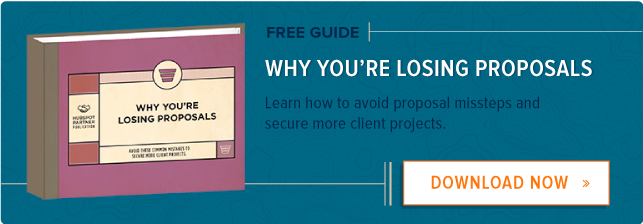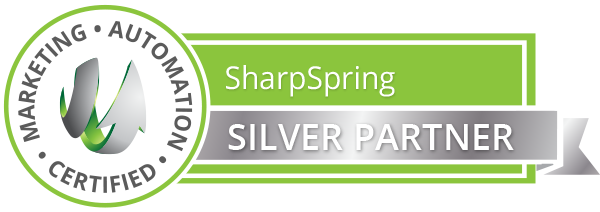
Your team has spent hours researching, writing, and refining a proposal your prospect was eager to receive.
Now, you are staring at your email account in frustration as you write your third follow-up email in as many weeks.
What could have caused this disappearing act? Was it the content of the proposal? Did the client get cold feet?
When this happens, some people even begin to imagine outlandish reasons why the prospect has failed to respond, such as a month-long vacation (she forgot to tell you about) to a location with no internet access. Maybe the prospect unexpectedly left the company but forgot to update her LinkedIn account (not that you were checking on a daily basis)? Maybe her email account was hacked, and she’s been forced to revert to paper communication and homing pigeons?
It’s possible … right?
The Real Problem Isn’t About Email
The issues illustrated above don’t occur because of the method of proposal delivery — though email is probably not the best way to communicate something of such importance to your business. Rather, the problem begins during the sales process.
For starters, if you are simply responding to the client’s comment — even if they seemed earnest in their request — that they would love to see a proposal, you’re wasting time. From the beginning, you’re putting your agency in a position of lower authority, which will destroy any negotiating power you initially had. In addition, you most likely have little insight into what the client’s challenges, needs, and goals are — or should be — resulting in a proposal that has little chance at converting the prospect due to its irrelevance to their pain points.
The rush to write a proposal and the resulting frustration due to a lack of feedback or even a simple “no” is the result of a non-existent sales process or one that is driven by the client’s wants, rather than the agency’s attempt to qualify and drive the right type of new business.
How to Define the Sales Process
You can’t automate the sales process, but you can make sure that you create fewer proposals that are ignored.
1) Understand Your Ideal Client
The first step is determining the attributes of the types of clients you want to work with. By creating an ideal client profile that aligns with your best types of clients, you’ll be able to screen for prospects who are simply shopping, who would be unhappy, or even worse, who would make your team members unhappy.
By focusing on the right type of client, you’ll better understand your target prospects, and you’ll increase sales and retention.
2) Create Qualifying Questions
If you understand your ideal client, you’ll be able to create questions that help you to discover who you should spend time with and who you shouldn’t. These questions can be used in lead generation forms, an intake questionnaire, or during a more formal meeting to discuss a future relationship. (Here’s a list of 26 qualifying questions to get your started, or you can review these sales qualification frameworks prior to building your own.)
These questions should move your conversation to the point where your team feels confident it can help the client overcome her challenges, providing value to the client in ways beyond simply producing work.
In addition, you should see the client’s interest and trust in your abilities increase during the process. Her tone and line of questioning should change from “Can you do this?” or “Do you have experience in this?” to “How would you overcome this challenge?” or “What has successes have you seen with other brands?”.
It’s a simple switch, but it shows that the client has gotten past the mindset of “prove to me that you can do what you say you can do” to wanting — and valuing — your advice and expertise.
3) Create a Proposal Template
Finally, you should create a simple proposal template you can use to reduce the time it takes to create the document.
Many agencies spend countless hours writing up details on the client’s challenges, the prescribed strategy, and why their agency is the right partner. While there are many differing opinions on how long and in-depth a proposal should be, the basis is that the proposal should be a written confirmation of what you have discussed. And that the client should understand this isn’t a document that will outline how exactly you will solve their problem because 1) you don’t know enough about the brand, its competitors, its problems, etc., and 2) you don’t give away your agency’s strategy prior to even winning the account.
The prospect should already know how great your team is, its track record for success from case studies, its processes, etc., so the proposal could be as simple as a one-page document with a contract attached for signing.
You should only send proposals to prospects you are certain will sign a contract. (And you should make sure you are sending it to the people who actually have the authority to sign on the dotted line.) If you’re not confident, then you need to do more work to nurture the prospect to the point where they are actually ready to review and sign a contract.
(Check out these proposal tools to make it easy to customize, track, and manage the process.)
How to Present a Proposal
Finally, when you are ready to hand over your proposal (or even better, a contract), don’t email it — at least not until you’re ready to review it with the client.
Before you even begin writing the proposal, schedule an hour meeting with the prospect to review the proposal in-person or over the phone. Make it clear that the proposal document is not the first step in the sales process, rather the last. The proposal should confirm and clarify the client’s understanding of the relationship, provide timelines and legal terms, and serve to inspire any final questions before beginning the first step in a new partnership.
If the prospect can’t commit to a one-hour meeting, that’s a sign this isn’t the right fit, and you shouldn’t waste time creating a proposal. And if the client only wants a proposal so she can price shop, then you haven’t done your job during the sales process. The price of your services should never be a surprise.
Fewer Proposals, More Contracts
Defining your own sales process, rather than letting prospects control it, is the first step to improving your proposal win rates and the types of clients your agency works with. According to research from Vantage Point Performance and the Sales Management Association, companies with a defined sales process see 18% higher revenue growth than companies without a formal process.
Bring your team together, and begin to document what your sales process should and could look like. And hopefully, this includes fewer proposals and more (signed) contracts.
![]()


